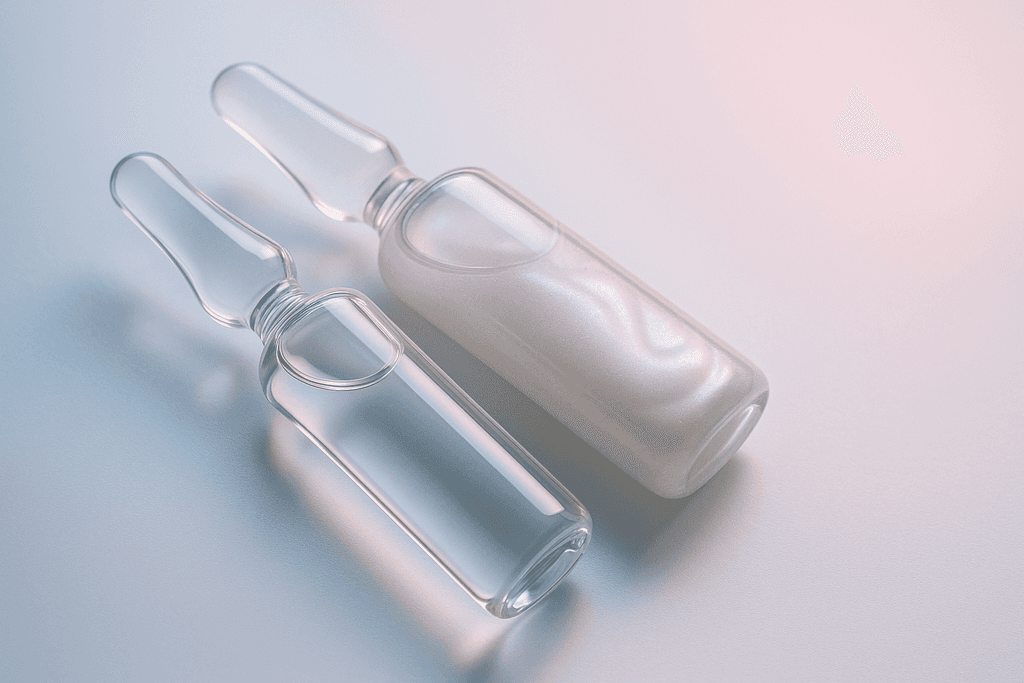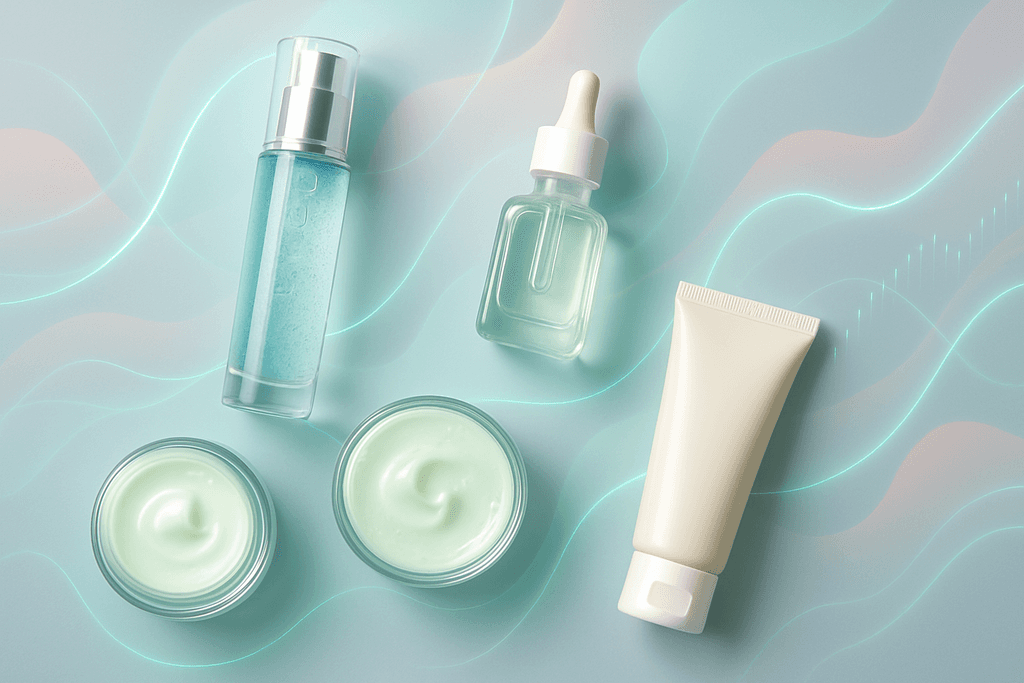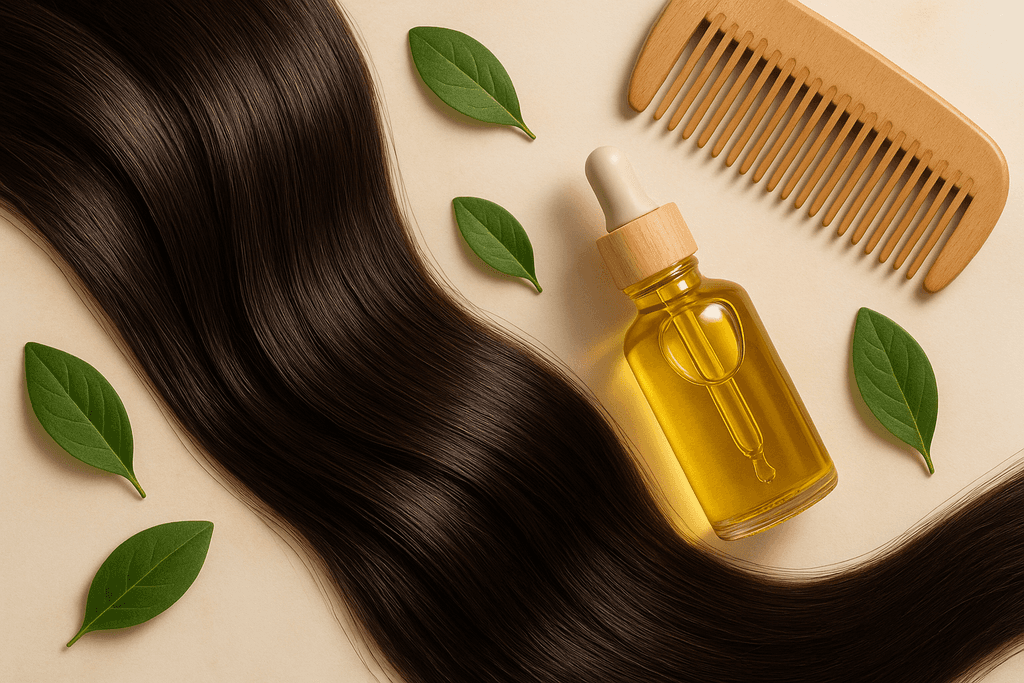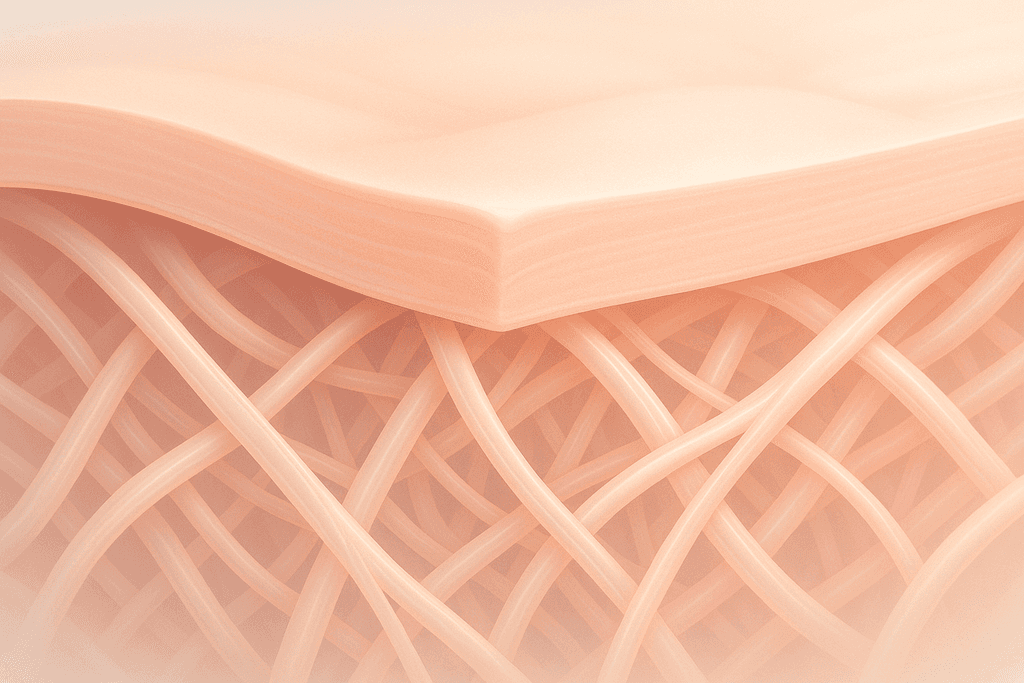Understanding chemical peels for skin clarity and texture
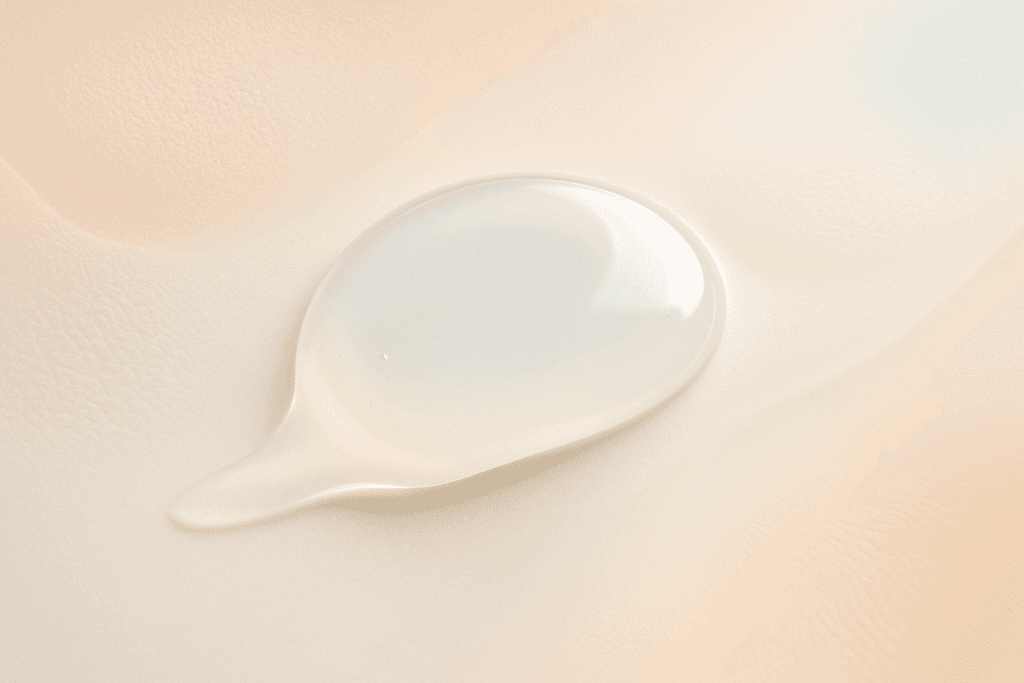
Picture yourself starting your day with skin so smooth and luminous that your confidence shines. Chemical peels unleash this potential, rejuvenating your look by unveiling a clearer, more youthful texture. At Caleyo Wellness, our chemical peel sessions are tailored to address issues like fine lines and unevenness, providing that desired glow without the need for invasive techniques.
Table of Contents
- The Evolution of Chemical Peels in Skincare
- Understanding Different Types of Chemical Peels
- The Science Behind Skin Clarity and Texture Improvement
- Preparing for and Recovering from a Chemical Peel
- Wrap-up
- Common Questions About Chemical Peels
The Evolution of Chemical Peels in Skincare
Imagine ancient Egyptians using sour milk baths for smoother skin. This lactic acid-rich method was a step toward today's chemical peels. Over time, these treatments have evolved significantly providing enhanced solutions for various skin needs.
Chemical peels date back centuries but became widely popular in the 1990s despite leaving skin irritated. Now, you'll find gentler versions that speed up recovery while still showing remarkable effects. Here is a brief history:
- 1920s: Initial medical peels with phenol
- 1950s: Glycolic acid peels debut
- 1990s: Rise in mainstream appeal
- 2000s: Introduction of mild formulations and blended treatments
- Today: Customized peels for individual skin issues
Modern chemical peels vary in both types and strengths. Some target the skin's surface, while others delve deeper. Choosing the right one depends on your skin type and goals. Common ingredients include:
- Alpha-hydroxy acids (AHAs) like glycolic acid
- Beta-hydroxy acids (BHAs) such as salicylic acid
- Trichloroacetic acid (TCA)
- Retinoic acid
These days, chemical peels are an integral part of many skincare plans. They tackle concerns like aging lines, uneven tone, and acne scars. At Caleyo Wellness, we customize peel treatments to fit your distinct skin needs by combining advanced peel science with a gentle approach.
Today’s chemical peels are more effective and comfortable. Research shows they even boost skin elasticity, making you appear more refreshed. As peel research continues, we anticipate discovering new advantages in skin rejuvenation.
Understanding Different Types of Chemical Peels
Chemical peels explained: They offer different strengths and ingredients aimed at specific skin challenges. The mildest choice, a superficial peel, relies on gentle acids like glycolic or lactic acid. They only address the skin's outer layer to leave a brighter, smoother look with little downtime.
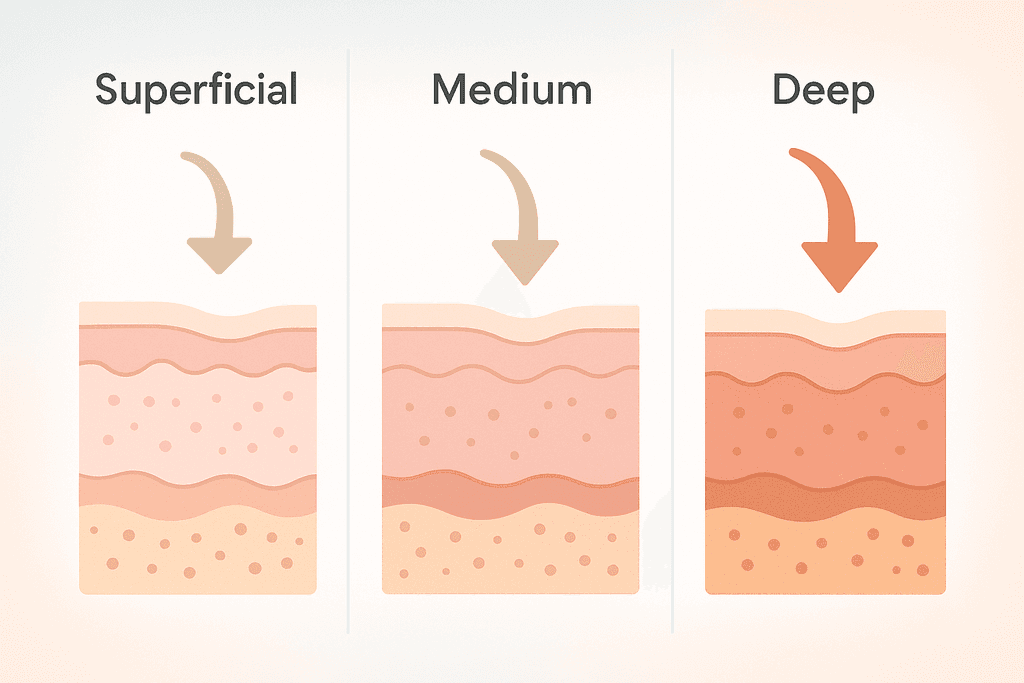
Understanding Different Types of Chemical Peels
If seeking more dramatic changes, medium-depth peels penetrate further down. Trichloroacetic acid (TCA) often features in these formulations to tackle, wrinkles, uneven pigmentation, and mild scarring.
- Superficial peels: Quick update, minimal recovery
- Medium-depth peels: Greater impact, moderate downtime
- Deep peels: Maximum results, extended healing time
The most potent options, deep peels often involve phenol and provide significant transformations but also demand longer healing periods. They're best for serious skin issues or deep-set wrinkles.
Caleyo Wellness provides customized peel formulations adjusted according to every individual's unique skin type and goals. This approach ensures the best possible outcome for your specific requirements.
The Science Behind Skin Clarity and Texture Improvement
Want to improve skin texture? Chemical peels create controlled skin damage prompting old cells to slough away making way for new. This boosts your skin's natural shedding, revealing a fresh surface.
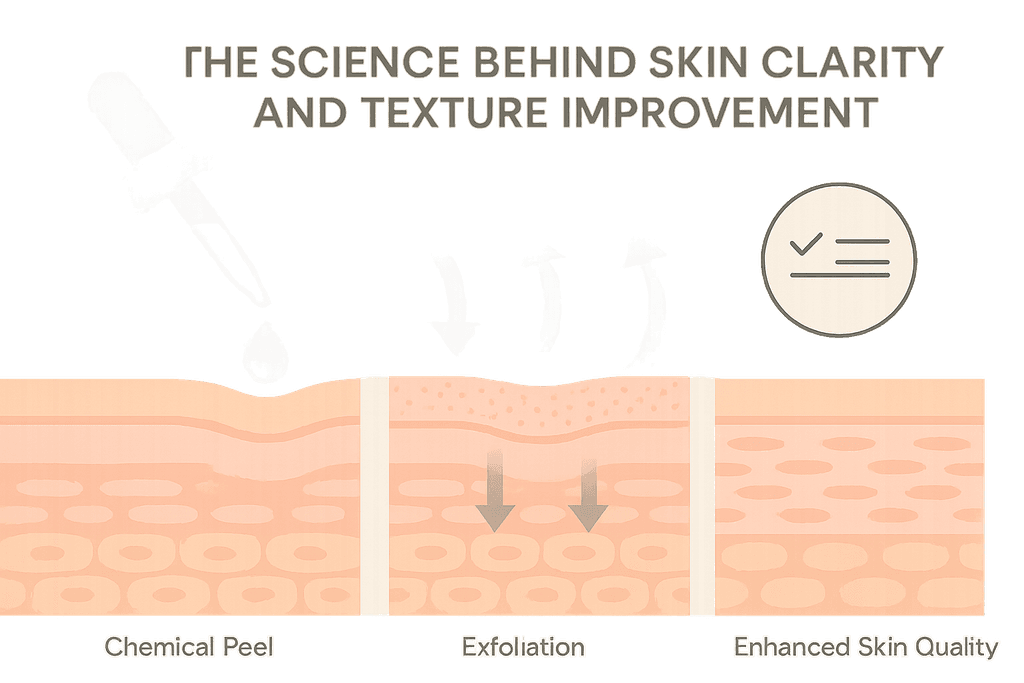
The Science Behind Skin Clarity and Texture Improvement
A great benefit is increased collagen production, a key protein giving skin its elasticity. It diminishes with age causing wrinkles. Peels promote new collagen, tightening the skin and reducing fine lines.
Different peels address unique concerns, such as:
- Acne: Peels unclog pores and reduce oiliness
- Pigmentation: Certain acids break down excess melanin
- Fine lines: Deeper peels stimulate collagen producing smoother skin
A review of chemical peel fundamentals in the Journal of Clinical and Aesthetic Dermatology elaborates on their workings at the cellular level.
Preparing for and Recovering from a Chemical Peel
Preparation is vital for optimal chemical peel outcomes. Beforehand, avoid certain skincare products like retinoids to keep sensitivity controlled, and shield your skin from the sun.
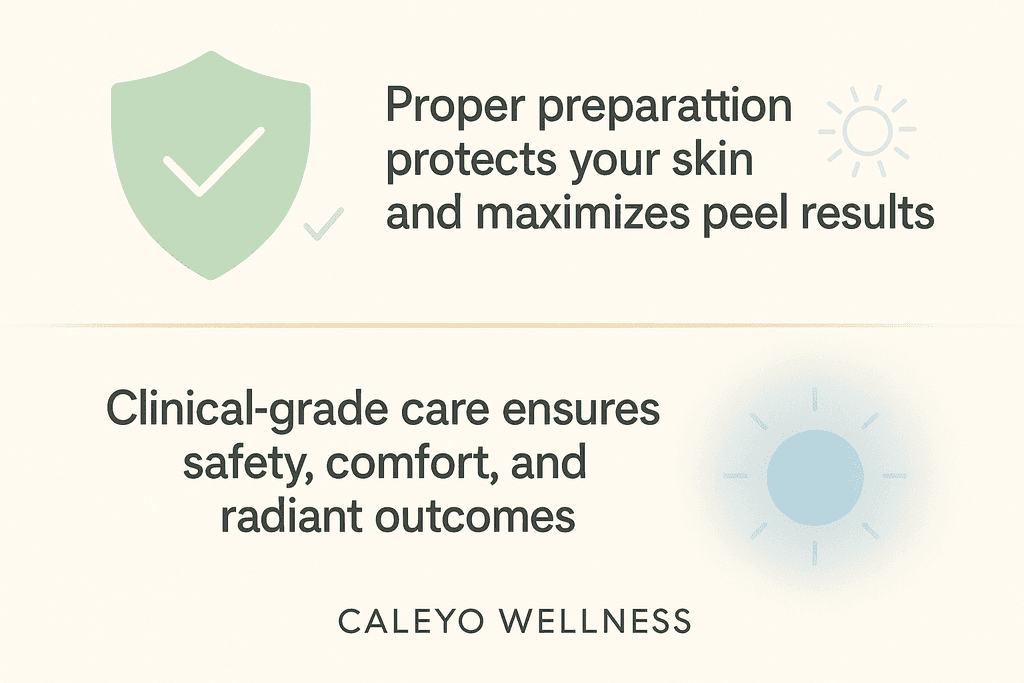
Preparing for and Recovering from a Chemical Peel
During treatment at Caleyo Wellness, our experienced staff will deeply cleanse your skin before peeling. Expect to feel tingling or warmth. The procedure usually takes between 30 minutes to an hour, based on peel type.
Post-treatment, temporary redness and peeling are normal. Recovery depends on peel depth, let’s break it down:
- Superficial peels: Little downtime, minor flaking for a few days
- Medium peels: 5-7 days of redness with peeling
- Deep peels: Possibly 2 weeks of intense healing
To keep results intact, follow a well-planned post-peel routine. It involves gentle cleansing, good moisturizing, and protection with sunscreen. At Caleyo Wellness, detailed aftercare will be part of your personalized regime.
For lasting clarity with chemical peels, periodic sessions support your best skin. Many find that a series spaced weeks apart works magically. Get that healthy glow without any lifestyle disruption at Caleyo Wellness.
Wrap-up
Chemical peels offer effective ways to rejuvenate and beautify your skin against aging lines and rough textures, giving you a cherished look. Remember, precise choices based on your needs impact effectiveness.
Caleyo Wellness emphasizes customizing peels for outstanding results. Our specialists conduct thorough assessments to plan the right program for real and safe outcomes.
Why wait? Explore chemical peels’ wonders for your skin. Schedule a consultation to discuss your options, and embrace great skin, achieved with an appointment.
Have questions about chemical peels? We've got answers. Find insights in the FAQ section below.
Common Questions About Chemical Peels
Are chemical peels safe for all skin types?
Chemical peels are generally safe for varied skin types when done by experts. At Caleyo Wellness, careful assessments ensure peels are adjusted for safety. Those with sensitivities might explore suitable options through consultation.
How often should I get a chemical peel?
Frequency varies based on peel type and your skin’s needs. Light peels may work every 4-6 weeks; deeper ones need months to recuperate. A personalized plan at Caleyo Wellness provides excellent results while... adhering to proper recovery periods.
Can I combine chemical peels with other skincare treatments?
Certainly, peels often enhance results alongside other treatments and correct home advice produces better outcomes. Proper integration and timing determined at Caleyo Wellness boost benefits significantly.
What results can I expect from a chemical peel?
Expect enhanced texture and reduced signs of aging along with improved tone and clarity. With Calcp readinessells diagnostic techniques refine treatment as progress moves toward optimal skin appearance.
How do I maintain results after a chemical peel?
Effective aftercare includes forgiving skincare matched with thorough protection produced by broad spectrum screens ensures long-lasting benefits while continuing maintenance check ups at Westenlu may reflect -probably- achieved best-effects with intact occurrence through use of gentle products advised upon essential already preneedent influencer druvingsichen AM ashina
